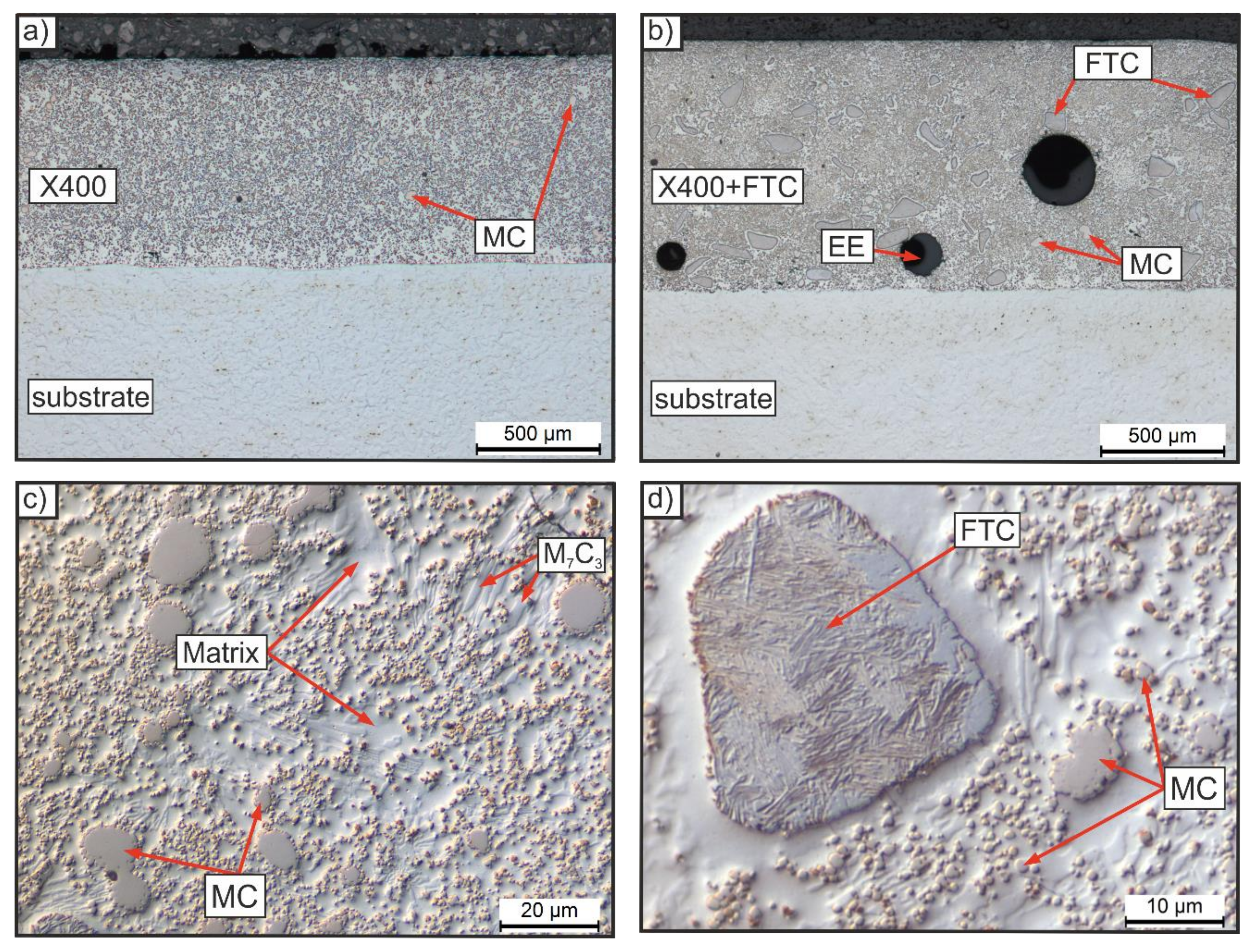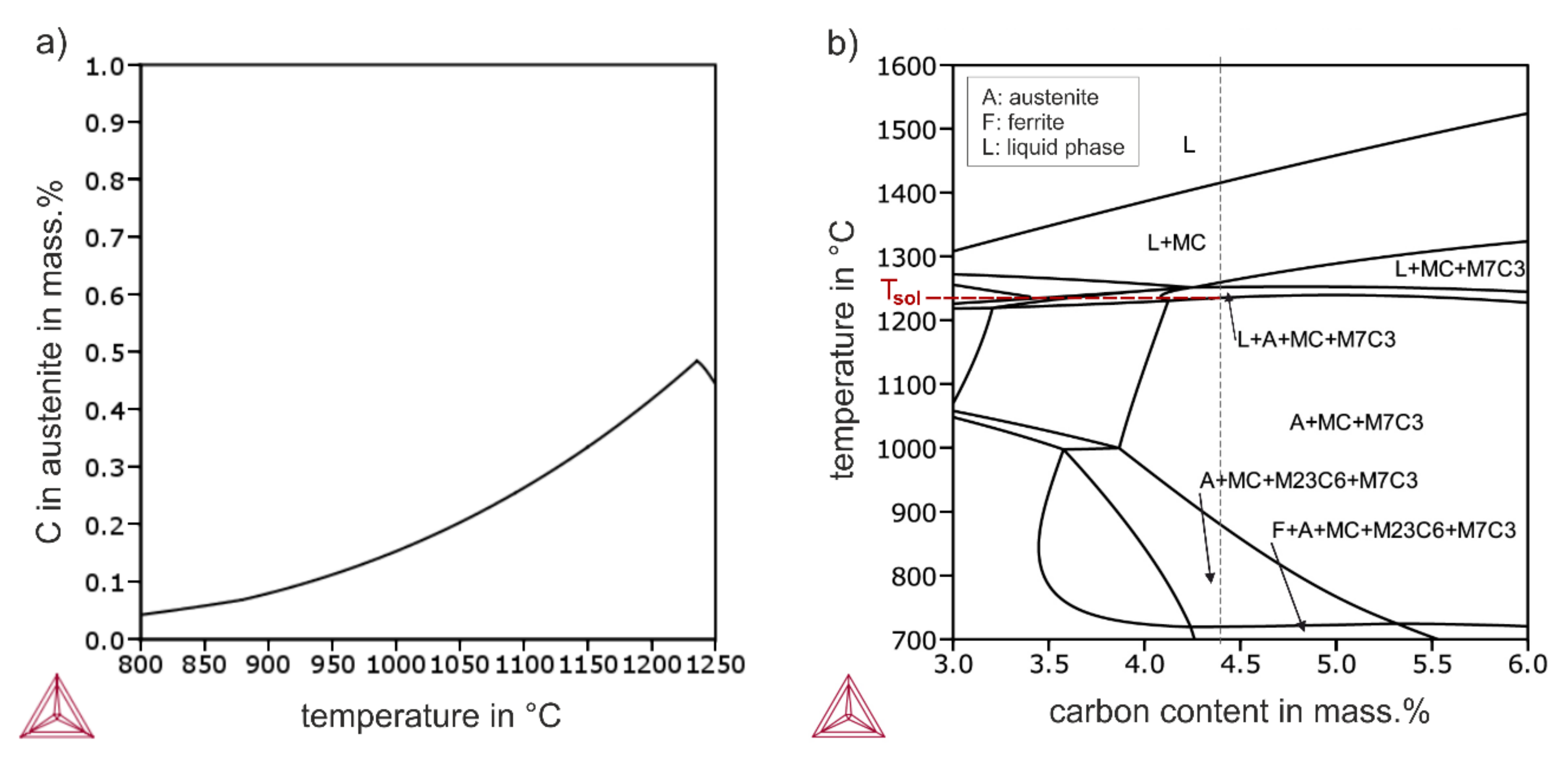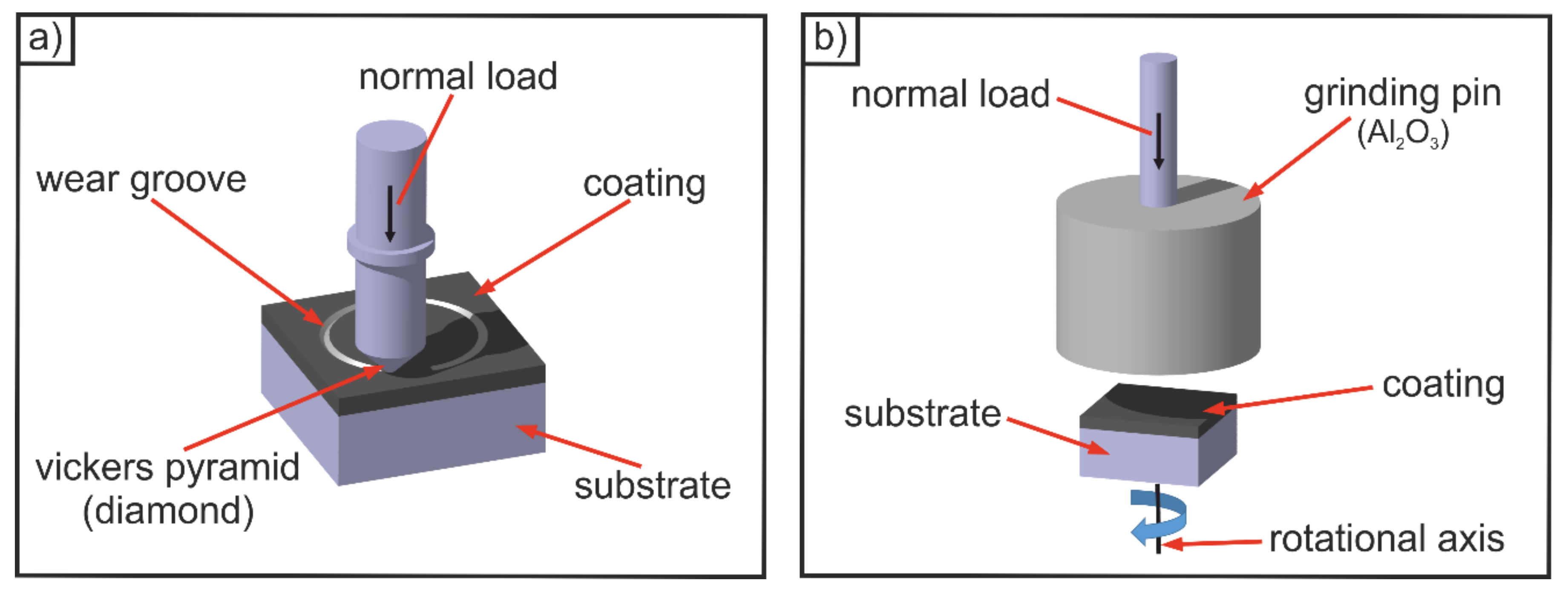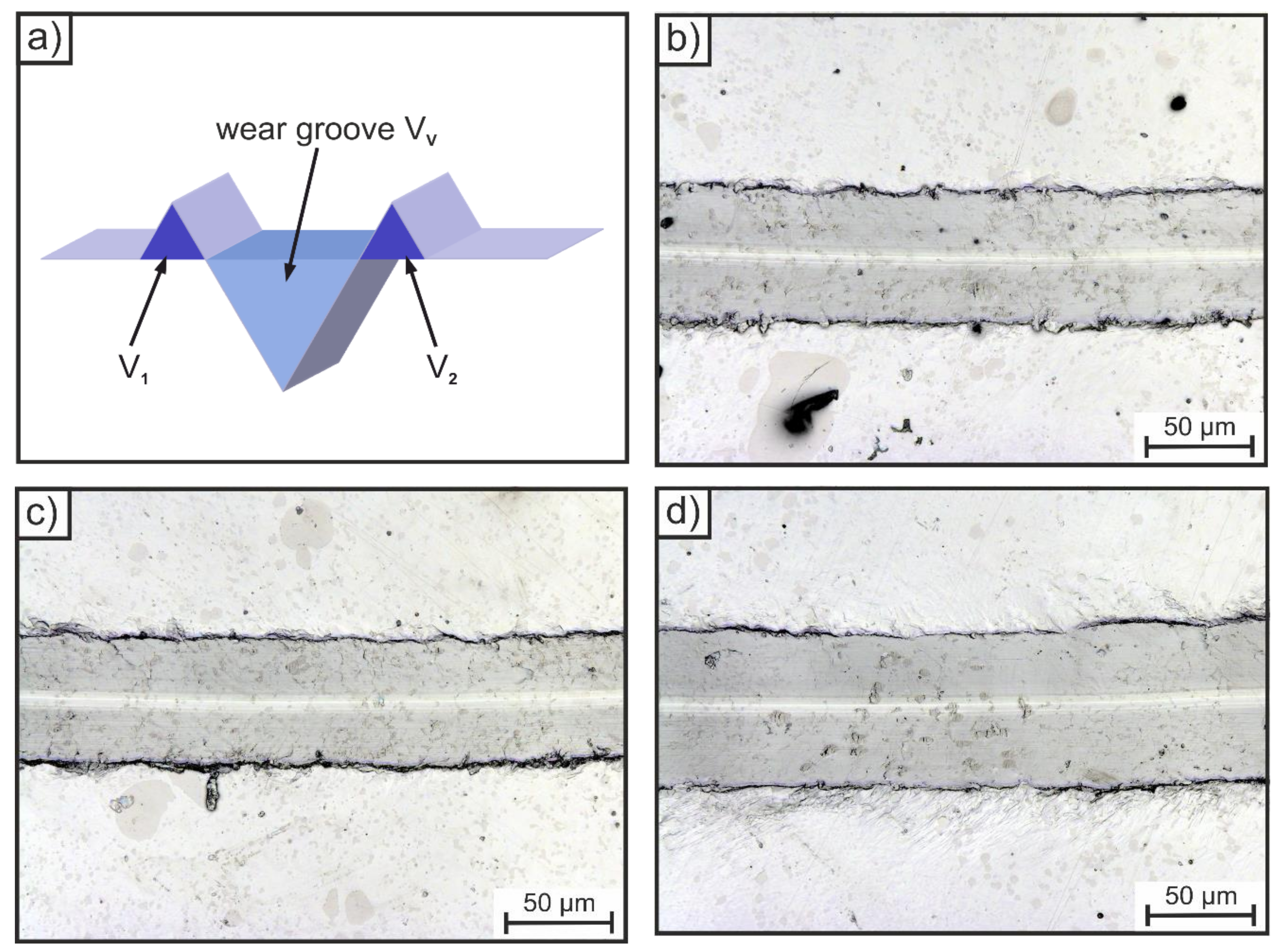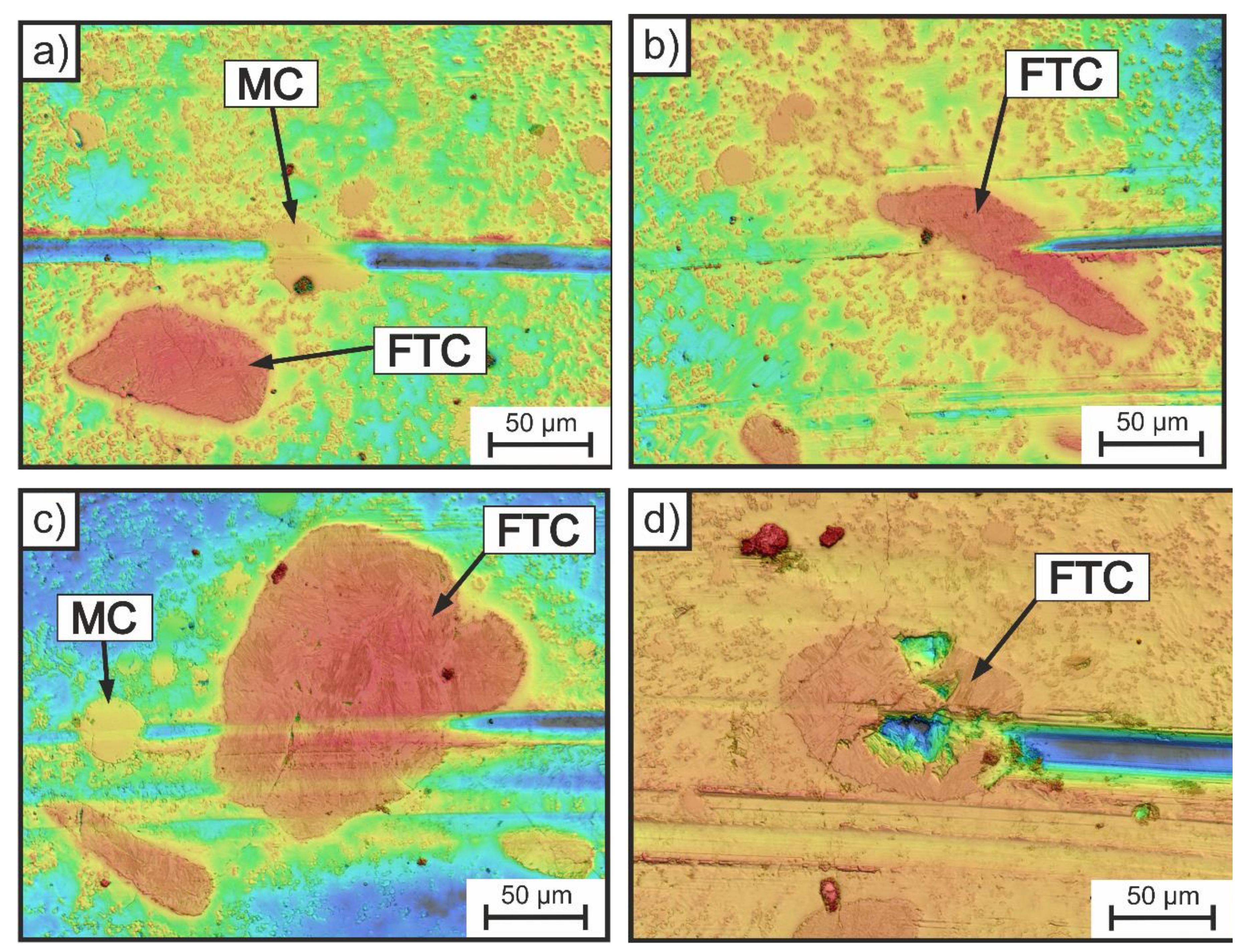Wear is understood as the undesired, progressive loss of material from the surface of a tribologically stressed solid [
1,
2]. This leads to high financial losses in industrial production. In Germany, the annual cost associated with damages caused by wear and corrosion exceeds some 10 billion euros [
3,
4]. Especially, tools and machines in the mining and cement industries are subject to heavy abrasive wear. An effective measure for reducing wear is the protection of the affected areas with wear-resistant layers [
5]. There are numerous different methods for the production of such layers, e.g., HVOF (high velocity oxygen fuel spraying) [
6], build-up welding [
7], HIP (hot isostatic pressing) cladding [
8], sinter cladding [
9], or inductive cladding [
10].
To produce these coatings, prealloyed metal powders based on iron, nickel or cobalt are commonly used. However, iron-based materials are significantly cheaper than alloys based on nickel or cobalt. Moreover, in most cases, the hardness of iron-based alloys can be increased significantly by martensitic hardening [
11]. With regard to HIP cladding, an additional heat treatment cycle to adjust the performance properties is obligatory after the compaction process [
8]. As an exception, heat treatment is not required when using cold work steels, e.g., alloyed with nickel, which have a significantly delayed austenite decomposition—they form a martensitic/bainitic microstructure, even by slowly cooling to room temperature (RT) [
12]. In general, iron-based coatings produced by sinter cladding are heat-treated after the consolidation as well [
13]. They can either be quenched directly after the sintering process and finally tempered, or they are hardened conventionally by a separate heat treatment cycle [
13]. With regard to the risk of grain growth, especially in commonly used low-alloyed steel substrates, subsequent heat treatment is preferable, because of the multiple γ-α/α-γ transformations, which cause grain refinement due to recrystallization processes [
12]. In comparison, welded layers and thermally sprayed coatings are commonly used in the condition as-processed. However, it has been proven that thermally sprayed coatings based on cold work steel powder can be optimized by heat treatment as well [
6].
In any case, the chemical composition of the austenite at the austenitization temperature has to be considered. On the one hand, the amounts of carbon and nitrogen in the austenite are responsible for the hardness of the martensite, due to their influence on the tetragonal lattice distortion. On the other hand, the dissolved alloying elements influence the amount of retained austenite (RA). In particular, high-alloyed steels most often contain RA after quenching to RT because of the effect of the alloying elements to reduce the Ms and Mf temperature [
14]. As an alternative to conventional tempering, deep cryogenic treatment is a proper method to transform RA into martensite, and thus to improve the resistance against abrasion [
15].
Another effective measure to increase the abrasive wear resistance is the addition of hard particles to a metallic matrix [
12,
16]. In this context, it should be mentioned that the particles must be of adequate size to counteract the abrasive particles—at least as large as the wear grooves [
16]. Furthermore, it is important that the hard particles are at least ~20% harder than the attacking abrasives to increase the wear resistance significantly [
17].
The subject of the present work is iron-based protective layers with and without particle-reinforcement, which were produced inexpensively with the patented hardpaint technology [
18,
19]. Conceivable parts that could be protected with this technology are, for example, screw-conveyors or dumper bodies. In general, the hardpaint technology enables the inner coating of pipes intended for the transport of abrasive solids. In the context of a layer selection process, as well as the specific tribological system of the application, the properties and the wear behavior of the eligible protective layers must be known. In [
18], it was demonstrated that the produced hardpaint layers are very wear-resistant to abrasion, in particular, the coatings reinforced with fused tungsten carbides (FTC). To investigate the wear-reducing mechanism of FTC, scratching tests have already been carried out [
20]. Due to the dependency between wear and tribological system, the behavior of the carbides stressed by a grinding pin in the abrasion wear test is microscopically analyzed in this work.
All hardpaint layers examined so far were in the condition as-processed. It is known that the abrasive wear resistance increases with increasing material hardness. As already mentioned, for iron-based materials, this can be achieved by martensitic hardening. However, it is unknown whether it is possible to modify the wear resistance of these hardpaint coatings through subsequent heat treatment. As a result, the unreinforced layers are investigated in various heat-treated states and the results are compared. In addition, this work examines whether the wear resistance can be increased more by a subsequent heat treatment than by reinforcement with FTC.
